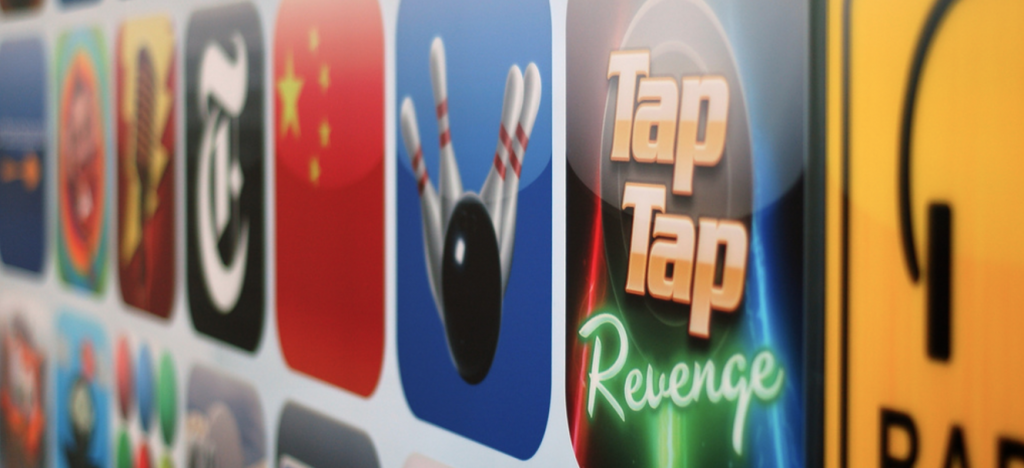
In this ever-changing world, one thing stays stubbornly the same: app store pricing.
The mother of all app stores, Apple App Store, came in July 2008 with a flat commission: 70 percent to the developer, 30 percent to Apple. Android Market (now Google Play) was introduced two months later, with the same cut: 70/30. Windows Store was four years late to the party, so Microsoft decided to set bait. Developers started with a 70/30 cut, but then were upgraded to an 80/20 cut after they had reached $25,000 in sales.
In eight years, Apple experimented with dubious design choices, the Microsoft board decided that Ballmer should stop dancing, but app store pricing didn’t change. Yes, Apple introduced an 85/15 cut, but only for subscriptions, and only after the first year. On the other side, Microsoft ditched its initial discount in 2015 and went with the standard 70/30. Which begs the question:
Is 70/30 some magic ratio or just an arbitrary convention?
Let’s examine that. From a developer’s perspective, the app stores provide the following benefits:
- Payment processing. For developers, it eliminates the pain of connecting to credit card systems and merchant accounts. For users, it reduces payment friction, making them buy more.
- Hosting. App stores do reliable hosting, even when there is a surge of traffic. No more updating servers, or waking up in the night because of a hacker intrusion or a DDoS attack.
- Quality review. Before publishing, apps need to pass an acceptance review. Developers often hate this procedure, but a marketplace without viruses or broken apps makes a user experience better. Satisfied users buy more.
- Marketing. It is hard to reach users. App stores promise that if you have a high-quality app, it will go up in the rankings and maybe end up in the featured section.
- Platform access. Apple, Google, and Microsoft invested hugely in creating a platform and devices on which you can run your apps. Maybe a part of their 30 percent cut is a fee to access their platforms?
Reasons to use app stores are quite compelling, and all platforms are moving in that direction.
But, the value of listed benefits changes significantly with the perceived user value of the app. This dynamic is not intuitive, so let’s use two imaginary developers as an example:
| FlappyElephant app is a simple, casual game, made by one developer in his spare time. It costs $1. | AcmeShop app is a complex editing tool for photographers and illustrators. Made by a team of 200 people, it costs $100. |
These developers’ views on the above app store benefits are quite different:
| Payment processing | ||
| FlappyElephant: Great, I get charged only 30 cents on the dollar! Other payment collectors charge up to 75 cents per transaction. And there is no way a customer would otherwise take out a credit card for a $1 indie game. | AcmeShop: $30 per transaction!? Our Stripe-powered webshop costs us $3.2 per transaction (2.9% + 30¢), 9.4x less! | |
| Hosting | ||
| FlappyElephant: After I deploy, I don’t have to worry about it. It can scale and customers will get the update automatically. | AcmeShop: We already have our own servers; the app store is just one more place where we need to deploy. | |
| Quality review | ||
| FlappyElephant: Annoying, but at least they let me know it breaks on tablets. | AcmeShop: Every release is delayed for two days. On iOS, ratings are reseted after every release. | |
| Marketing | ||
| FlappyElephant: I can’t believe so many people are finding my small app. Otherwise I would be roasted; AdWords is $1 per click and nobody searches Google for “flappy elephant”. | AcmeShop: People buy our $100 app because they have known us for 10 years, not because they noticed us while scrolling a list with 50 other apps. | |
| Platform access | ||
| FlappyElephant: If there were no smartphones, there would be no FlappyElephant! | AcmeShop: If there were no tools like ours, creative professionals wouldn’t use the platform! | |
Two app developers, two very different stories. While FlappyElephant’s developers would pay even 50 percent, AcmeShop’s developers consider everything above 10 percent to be a ripoff.
There is a way to satisfy both parties: progressive pricing. The commission should fall as the price of the app increases, which can be implemented in many ways.
For example, this funky-looking formula:
Commission = 22 / (9 x Price + 90) + 7 / 90
Has a nice property of commissions for $1, $10 and $100 being round numbers:
| Price | Commission |
| $1 | 30.00% |
| $2 | 28.15% |
| $5 | 24.07% |
| $10 | 20.00% |
| $20 | 15.93% |
| $50 | 11.85% |
| $100 | 10.00% |
| $200 | 8.94% |
Price can be either actual transaction price, or, arguably more fair, cumulative user spend per app. In the case of latter, after user purchases 10 times a $10 monthly subscription, cumulative user spend is $100 and the developer is given a 10% commission. Again, this is just one of progressive pricing options.
I think that makes perfect sense. I purchase many $1 apps impulsively, thanks to the app stores. But I never purchase anything above $20 without going to the Internet and researching all the alternative options. I buy an expensive app because I trust the developer, and then the app store just makes it more expensive. Not just 30 percent. App stores make it 42 percent more expensive (30/70=42.8%).
Of course, big developers like AcmeShop are not stupid. They have found a way to have their cake and eat it too. The solution is simple:
- Make your apps free.
- In order to use the app, users need a separate “cloud” account.
- The free account doesn’t offer much.
- The free app unlocks content or features that can be purchased in the “cloud.”
One by one, big developers have started implementing exactly that strategy.
For example, the Amazon Kindle iOS app doesn’t allow book purchasing:
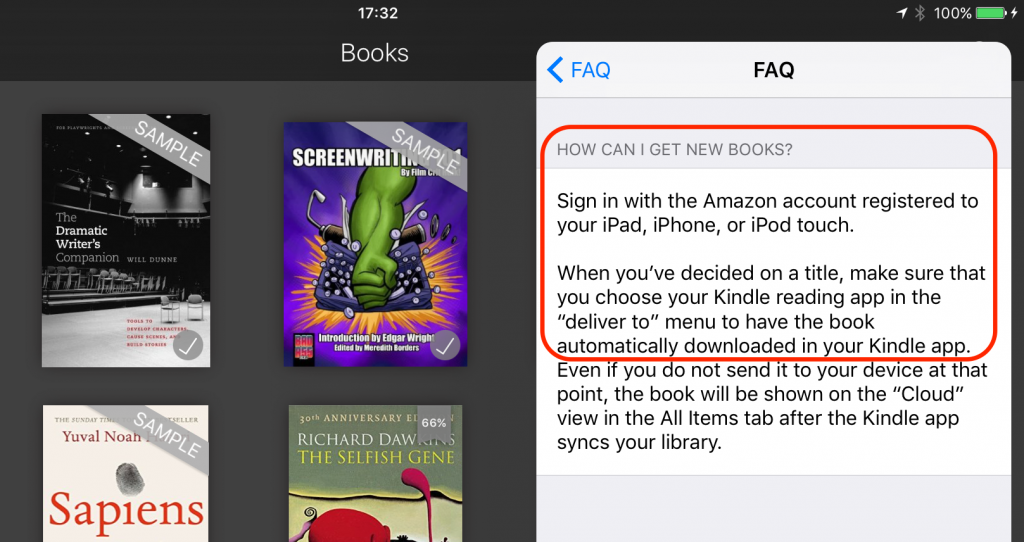
Kindle’s Android app is even more blunt; it circumvents Play Store with a built-in browser (!):
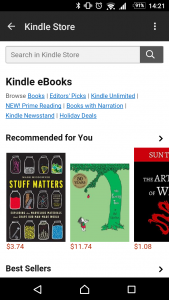
Microsoft Office mobile is free for devices smaller than 10.1 inches, but larger devices need a separate Office 365 subscription:
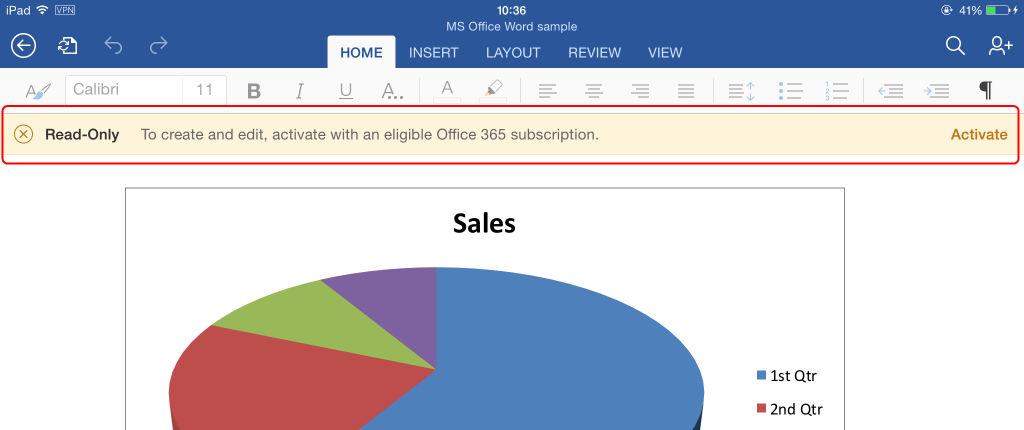
Spotify has a slightly different system. It offers in-app purchases, but they are more expensive than purchasing a subscription on their website. Spotify even sends an email to users warning that they made a stupid decision:
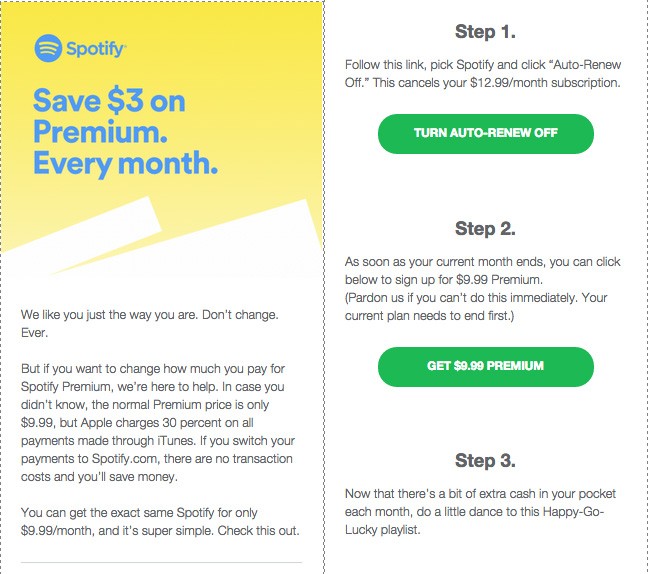
Practically every music subscription service has been circumventing app store payments since 2011.
So, congratulations, dear app store product manager. You just shot yourself in the foot. You were greedy for 30 percent and now you are getting zero percent. And users of your app store are annoyed that purchasing something requires switching to a browser. But what can you do? If you kick Kindle, Office, and Spotify off your app store, then nobody will care about your platform. So maybe big developers are right—maybe you should pay them to publish great software on your store? Like when Microsoft was paying selected developers up to $100,000 to port their apps to Windows Phone.
Mobile app stores have a problem with big developers avoiding payment systems, but desktop app stores have an even bigger problem: they are avoided altogether.
This year, the co-founder of Epic Games wrote a long rant about UWP and Windows 10 Store, asking for Microsoft’s guarantee (among other things) that:
“…users, developers, and publishers will always be free to engage in direct commerce with each other, without Microsoft forcing everyone into its formative in-app commerce monopoly and taking a 30% cut.”
But the Windows 10 Store is good compared to the Mac App Store, which is a joke. It is only useful for downloading Apple apps—in which case Apple pays a commission to itself. Even top-grossing featured apps are leaving, and switching to manual installation. Compare that experience to that of a mobile app store install:
| MacOS manual install | iOS | |
|
|
Mounting drives? Dragging and dropping to a system folder? What is this, an 80s Mac with a floppy drive?!
And, in case a Mac app doesn’t have an automatic updater, for every upgrade you have to repeat the exact same procedure.
On Windows, manual installation is a few steps simpler, and you often get a nice malware as a reward for your effort. Like the PCs of my extended family. One of them has so much malware it would be the envy of the Kaspersky Lab researchers.
Why are Mac and Windows still in the Stone Age of app distribution?
Back to the original question. I argue that a 70/30 cut is an arbitrary ratio trying to be one-size-fits-all. It fails at that because the value proposition is completely different for developers of low-price versus high-price products. And app stores fail to profit on high-price apps, because that high price is listed somewhere else.
So, we are now in a triple loss-loss-loss situation:
- Users have a bad experience because purchasing or installing an app is convoluted.
- Developers have to create workarounds that create user friction.
- App store owners make zero money on high-price products.
And it is all because of tech politics.
I will end with that conclusion, as I need to go and mount/unmount some drives.
UPDATE: Check the discussion on Reddit.